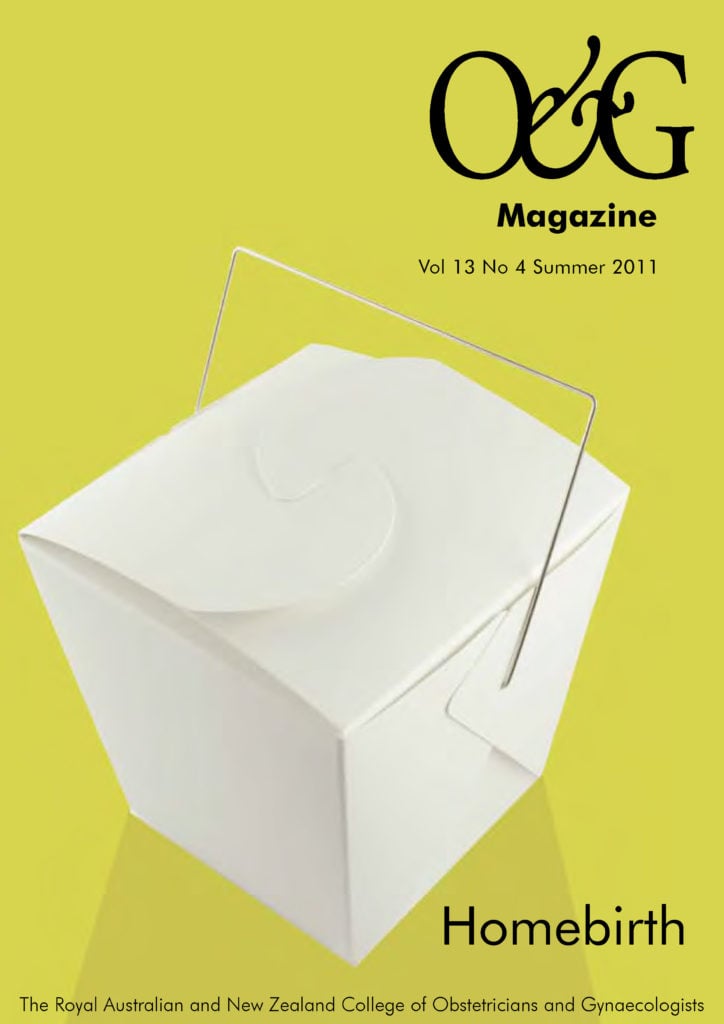The reasons for and against a planned homebirth can be as individual as the people involved; however, minimising risk is a concern for everyone.
‘We can’t have a homebirth, we have a septic tank, it’s just not sterile here. And, besides, our house is too messy.’ When I first broached the idea of a homebirth I didn’t expect my partner Lindsay to be open to the idea, so I was surprised by his minimal objections. We ascertained that it was in fact possible to give birth in a building that was neither sterile nor tidy, and we then set about a more serious decision-making process with some urgency, as I was seven months pregnant with our second child.
During my first pregnancy I never considered homebirth. It appeared to be something that women did with second or subsequent babies, so I assumed that homebirth wasn’t ‘allowed’ with first babies. At that time it sounded like a nice option to consider next time, after
of course ensuring that I could birth naturally without incident. Paradoxically, it was only in response to a caesarian section that I seriously considered homebirth, as I felt that it was quite probable that I would be railroaded into another caesarean if I presented at the hospital. I would have been happy to deliver at a birth centre, but that option is not available where we live.
‘I read countless studies and articles and descriptions of uterine rupture, compared statistics, listened to birth stories and analysed advice from a variety of sources, all with the goal of improving my chances of a natural hospital birth.’
The day after my caesarian I was visited by a doctor who informed me that for any subsequent babies I would have to see an obstetrician during the pregnancy, I would have to birth in the hospital and I would have a 50 per cent chance of another caesarean. Coupled with terms such as ‘trial of labour’ and further rules and requirements for a vaginal birth after caesarean (VBAC) labour, I felt that I was merely being humoured rather than provided with a valid opportunity to birth my babies naturally. It appeared to me that my chances of a natural delivery were poor, so I set about researching what I could do to improve my prospects.
I read countless studies and articles and descriptions of uterine rupture, compared statistics, listened to birth stories and analysed advice from a variety of sources, all with the goal of improving my chances of a natural hospital birth. In particular, I was interested in the sizeable discrepancy between caesarean rates for first-time mothers and for those with a previous caesarean birth. When I read about the timing of uterine rupture and that a sizeable proportion occur before labour or during early labour before going to hospital, I surmised that planning to go to hospital for the latter stages of labour and delivery would not significantly reduce my risk of rupture. I began to question whether I was really high risk in comparison to first-time mothers (especially having previously laboured spontaneously and fully dilated) and whether a hospital birth was imperative.
I tentatively asked our midwife if there was any possibility of a homebirth. She was cautiously supportive and sought experience and advice from other midwives. We agreed on a conservative approach, including monitoring. Lindsay and I knew and communicated with her well, and we learned that she was highly regarded by the hospital staff we encountered and that she had considerable experience in both hospital and homebirths. I would not have considered homebirth with any midwife not routinely working within the hospital system. We trusted our midwife’s judgment with regard to any change in plans or transfer to hospital.
‘… my decision to homebirth was as much a decision not to birth in a hospital as it was a decision to birth at home.’
We discussed the risks of not being in a hospital in the event of complications and made plans for potential transfer to hospital. We considered our proximity to the hospital, noting that women requiring emergency transfer from Waitakere hospital would travel a significant distance before passing our gate.
I was desperately aware of the responsibility of making this decision and the enormity of the consequences that this decision could have. I spent a lot of time questioning whether I was foolhardy, selfish or disregarding the baby’s safety in favour of my own ideals and, in particular, I had reservations about whether Lindsay was in fact a truly well-informed consenting participant and therefore whether it was fair of me to lead him down the homebirth path. While I resented the obligatory obstetrician sign off for a trial of labour, which I regarded as seeking permission to give birth, it did provide clarity and structure to the decision-making process. I didn’t want to put my baby at risk. Yet I recognised that any pregnancy and birth involves some risk and that choosing to undergo a second pregnancy post-caesarean involved some inherent risk not present in my first pregnancy. While wary of increased risk of other complications without immediate medical care, by at least planning to birth at home I hoped to reduce the risks associated with caesarean delivery.
In the end, my decision to homebirth was as much a decision not to birth in a hospital as it was a decision to birth at home. I had a short labour and an easy delivery, and Rory was born at home early in the morning on his due date. The septic tank didn’t present any issues and the house is still messy.






Leave a Reply